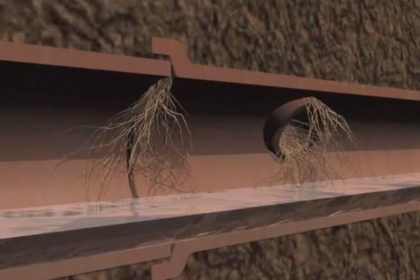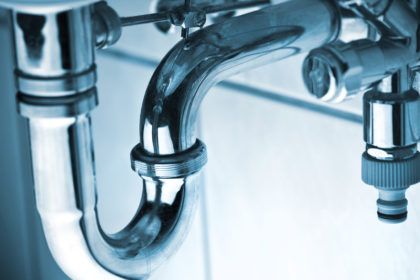Waste not, Want not
All Pro Plumbing Services, Inc.
Delivering premium work and outstanding service.
Waste not, Want not
We know, updating your leaky faucets, high flow toilets and inefficient water heaters is not at the top of your “Wish List,” but making these few small improvements will add up to more than just savings on your water bill, it saves thousands of gallons of water.
Fortunately, knowing the importance of these simple fixes, the federal tax credits for energy efficiency have been renewed for purchases made in 2016 and retroactive purchases of EnergyStar Products in 2015.
There are many rebates, incentives and credits available to help lower the price tag, we’ve outlined a few of them below. Take advantage of them and make your home more efficient. Trust us, it’s worth the effort.
Water Heaters:
Water heating accounts for about 18% of energy use in your home. The average water heater lasts 10-15 years, and even if it’s still chugging, replacing with an efficient water heater makes financial sense. Not to mention, if the tank should rupture, you could have a real mess on your hands. For more information on selecting a water heater, rebates and other water saving tips check out this infographic from Energy.gov
• Residential Rebate for an Energy Star Heat Pump Water Heater; The Orlando Utilities Commission (OUI) will pay 100% of the cost up to $650.
Toilets:
The Environmental Protection Agency reports that toilets are by far the main source of water usage, accounting for almost 30% of an average home’s indoor water consumption. To give you perspective, older, inefficient toilets can use as much as 6 gallons of water per flush, whereas new models can use just 1.28 gallons per flush. This kind of savings could save billions of gallons of water each year.
• Orange County Utilities is accepting applications for $100 vouchers toward replacing high-flow toilets.
• Orlando Utilities Commission is offering a $50 rebate for replacing a toilet with a flow greater than 1.6 gallons per flush, with an ultra-low flow toilet of 1.6 gpf or less.
Faucets and Showerheads:
More than just being flat out annoying, leaky faucets and showerheads are a huge waste. One drip per second wastes 1,661 gallons of water and can cost up to $35 per year. (energy.gov)
Orange County Utilities offers a Showerhead Exchange during the month of April. Orange County Utilities water customers can receive up to three showerheads to replace showerheads that use 2.5 gallons per minute or more.
For more information go to:
• Florida Tax Credits, Rebates and Savings
• Or use the Rebate Finder on EPA.Gov
All Pro Plumbing services is an epic company to work with, delivering premium work and outstanding service.
Book Online
Contact Form
"*" indicates required fields
Plumbing Services
Comprehensive Solutions for Every Plumbing Need
Residential Services
Reliable residential plumbing solutions to keep your home running smoothly.
Construction Services
Professional plumbing installations for new construction and renovations.
Repiping Services
Reliable and long-lasting repiping solutions to improve your plumbing system.
Explore More From Our Learning Center

Nature vs. Plumbing
The unfortunate reality is that nature can wreak havoc on you’re plumbing system. The good news is that with regular maintenance and inspection, you can prevent damage or at least minimize the problem.
Roots
Known as “root intrusion” the name is fitting for one of the biggest culprits of broken pipes. Your sewage drainage system is crucial to the overall functionality so keeping it maintained will save you from costly repairs.
Generally, visible roots are only a portion of the entire root. Even a small puncture allows roots to grow through and obstruct the pipe. In Orlando and Central Florida, we have a high water table making it easier for the roots to seek out the water source. If you notice a slow in water flow, or if multiple fixtures such as the toilet, sink or shower start backing up, most likely you will need to repair or replace a pipe. This should be done by a professional plumber. Cleaning the interior with chemical or herbicide treatments is a temporary fix and won’t solve the real problem. Also, some of the treatments are illegal and can carry large fines.
Lightning
It’s rare to associate lightning with plumbing issues, but it’s a real concern. Especially in Central Florida which has ten times as many lightning strikes as the rest of the country. When lightning strikes the water distribution systems, it can cause pinhole leaks and sometimes even burst the pipes, costing thousands of dollars in uninsured plumbing repairs.
The theory is that lightning sends electricity shooting through the ground when it strikes. It seeks out buried, copper pipes or the home’s ground rod. It moves through the pipe until it reaches a dead end, usually at a plastic junction. The electricity needs an outlet, so the charge jumps from copper to water leaving a hole in the pipe.
To keep abreast of any damage, it’s wise to do a visual check for leaks by inspecting all appliances and fixtures that need plumbing. If you find a leak, get a professional pressure test and repair even small leaks before they get worse.
Warm Weather
Heat is also damaging to your pipes. When the ground dries out from lack of rain, it causes the house to settle which can cause your water main to crack or leak. Ultraviolet Rays can also damage exposed pipes so be sure to cover them with insulation.
Buried pipes have an increased water pressure which adds strain to the pipeline walls. Older pipes are often made of concrete making them more susceptible to breakage.
It’s important to keep the ground as moist as possible, however, with the increasing need for water conservation, watering around the foundation is most important.
If you suspect damage, call All Pro, we’ll find the cause and fix the problem.

Beating Backflow
When it comes to plumbing systems, there are a lot of things we take for granted- clean water being one of them. But this necessity isn’t a given. Contaminated water can enter your private water system, or even worse, the municipal system. Fortunately, there’s a stop-gate for that— literally.
Here’s how it works. Water should be a one-way flow, but when normal water pressure drops from things like a water line breaking, or a fire hydrant being used, causes the pressure to drop which reverses the supply water sucking contaminated water back into the system. This can happen from any source that is cross-connected such as toilets, dishwashers, washing machines and sprinkler systems. A backflow devise protects your home from this happening. If the water is flowing in one direction, the backflow devise remains open. If the water flow is reversed, the backflow device creates a physical barrier to stop the contaminated water from entering.
There are three main types of backflow devices:
• Reduced Pressure Principle Assembly. This device is best for major hazard applications. It’s the most complex and therefore more expensive, but it’s the most reliable and secure.
• Pressure Vacuum Breaker Assembly. This is the most common whole-system backflow device used most often for irrigation sprinkler systems.
- Atmospheric Vacuum Breaker Assembly: This inexpensive device is used for single fixture applications such as toilets, urinals, and some faucets.
• Double Check Valve Assembly: This device is used for underground or in-line installations, meaning, the devise runs parallel with the piping of your sprinkler system.
Fresh water isn’t something to reckon with, so there is also a second line of defense, the Dual Check Valve, which controls the backup at the cross-connection point.
For new construction, ALL PRO Plumbing can help you figure out the best solution for your needs. For existing systems, it’s important to have the devices tested periodically. Because of the moving parts including internal seals and springs, a lot of wear and tear can occur.

Plumbing Problem Prevention
Face it, it’s easy to ignore your plumbing system until something goes wrong. Really easy. But taking the time to check your system can keep problems at bay, saving you a lot of time, money and hassle. So roll up your sleeves, don the rubber gloves and get to work.
Drain your water heater. Keeping your water heater clean isn’t hard, but it is important. First, turn off the power and/or gas supply to the water heater.To drain, attach a hose and drain the water into a bucket. Briefly turn on the cold water valve, which will stir up the sediment. Drain again and repeat until the water comes out clean.
Check your drains. Clogged drains can be a real mess, so do a once-over to see if you suspect one coming your way. Is there a lingering smell? Does it drain slowly? Does it get clogged frequently? If so, either shut off the valves and open up the pipes to clean them, or call a plumber. Liquid drain cleaners aren’t recommended since they can erode the pipes and make clogs worse.
Clean the toilet tank. Yes, we said the tank. Doing so can extend the lifespan of your toilet. Standing water brings about mold, and debris can erode the rubber on the plunger and flapper. To clean, turn off the water and flush the toilet. Mix 1/4 white vinegar with 1 c. water and scrub. We don’t recommend toilet tabs because they contain bleach which can erode the parts. Either way, always wear gloves.
Check for leaks. For the toilet, put a few drops of food coloring in the tank. Wait 10 minutes, and if the color leaks into the bowl, you have a leak. If you see your faucets and showerheads dripping, don’t wait to fix them. You would be surprised at how much water (and money) is wasted through drips.
Some of these suggestions can be easily handled, but if you don’t trust your skills, call an expert for a plumbing inspection. Trite as it sounds, an ounce of prevention is worth a pound of cure!
